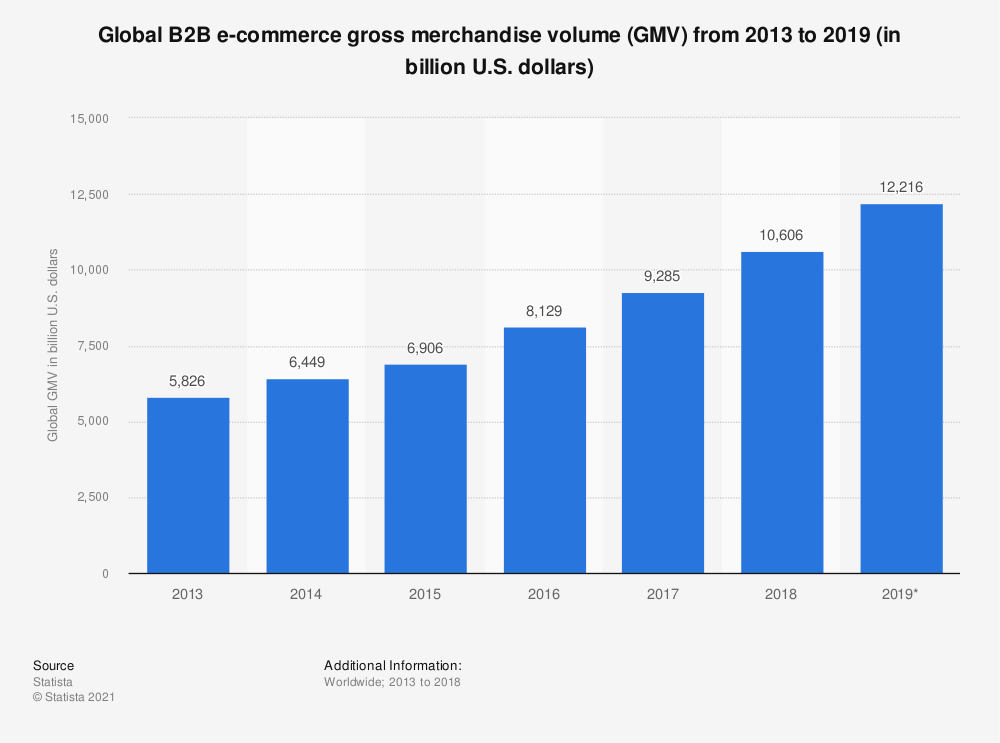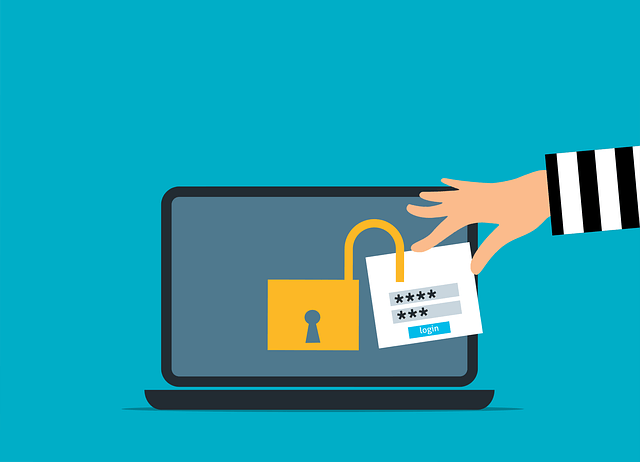B2B Ecommerce Trends: Get a Slice of the Trillion-Dollar Market



As customers’ online shopping become the new normal, b2b organizations were quick to spot the opportunity for B2B marketplaces.
These online marketplaces have become hugely profitable in such a short time that eCommerce jumped to $26.7 trillion since Covid 19. B2B eCommerce is growing by leaps and bounds, with no signs of slowing down from 2021 and beyond. In 2020, the global market size was already valued at $6.64 trillion and predicted to grow annually at nearly 20% until 2028.
This presents a tremendous opportunity for B2B eCommerce marketers to offer the best possible service online. But it also means there’s a lot to keep up with when it comes to keeping your eCommerce growing and profitable.
In this article, we’ll explore the current state of B2B eCommerce trends, what you can expect in 2022 and beyond, and how to use these eCommerce trends to your advantage.
Let’s dig in!
Do you want to grow faster? Schedule a free consultation call an with expert.
What is B2B ecommerce?
B2B eCommerce (or business to business online commerce) follows the B2C model, but with an important distinction. Rather than focusing on retail, most of your customers are other businesses purchasing goods or services for their own use rather than for resale.
While this is similar to B2C eCommerce, there are some key differences:
Limited marketing and advertising efforts
The B2B buyer is more informed than their B2C counterpart, due to the nature of the purchase. For instance, if a business purchases an office printer from you, they’ll have done their research already. They’ve looked at the specs, compared various brands, and likely even checked out user reviews before contacting you.
On the other hand, a consumer might be purchasing a printer for their home or small office – and that’s it. They’ll likely do only light research (if any), and look at whatever brands are placed in front of them.
A more informed buyer means you need to work harder to get your offer in front of potential B2B buyers.
More complex purchase process
For the same reasons as above, a B2B purchase is more complicated than one your average consumer might make. They may need to approve it across multiple departments or have legal teams review license agreements. Make sure you simplify this process for them wherever possible.
Higher price point
The price of goods and services will be higher when sold to other businesses. It’s not that B2B buyers don’t want a good deal – in fact, they’re often more cost-conscious than their retail counterparts. They just expect a better deal on larger purchases (like office equipment and software).
More expensive purchases drive B2B customers to do more thorough research.
It’s also important to note that while most B2C eCommerce companies focus on direct-to-consumer sales, the opposite is often true for B2B eCommerce.
Many businesses need multiple levels of distributors and resellers before they make a purchase. These are often referred to as “B2B buyers” because they’re the ones authorizing purchases.
This is why you might see B2B eCommerce companies focusing on high-level executives – they’re often the ones who sign off on larger purchases. The average consumers rarely interact with these decision-makers, and thus are not targeted by B2B eCommerce efforts.
The B2B Ecommerce Landscape in 2022 and Beyond
Based on current trends, it’s likely that B2B eCommerce will continue to grow – and FAST. This is largely due to the increasing need for international expansion and online transactions, as well as increasing numbers of small businesses (many of which will start out as home-based enterprises).
These factors are leading to more complex buying processes, better informed B2B buyers, and a growing focus on customer experience. Here’s a look at top b2b eCommerce trends, and how they might shape the B2B sphere in the next few years:
International expansion


Globalization is an important factor for any business looking to expand, and B2B eCommerce is no exception.
While there are still many advantages to focusing on the domestic expansion (like easier market research and better market penetration), companies also need to consider the global B2B buyers they might miss. If you only sell domestically, you’re missing out on a large group of potential customers.
In fact, more than 52 percent of the world’s population was considered part of the “global middle class” in 2015. As developing economies grow, that percentage will continue to rise – and with it the number of B2B transactions being made internationally.
Online competition from companies based overseas is also on the rise as part of B2B eCommerce trends. It means B2B eCommerce companies need to keep their products competitive with what’s offered elsewhere in the world.
The global nature of B2B transactions also means B2B buyers are more likely to look for businesses that offer international payment methods, like credit cards or PayPal. These days, it’s an expectation (not a nice-to-have) for most B2B eCommerce companies.
Boost Your Business with New AI Trends – Get a Free Strategy Session Today
The increased globalization of the business landscape is driving international expansion and with it payments that support online transactions.
More small businesses means more small digital commerce sites
As the U.S. economy grows, there will be an increasing number of small to medium-sized businesses opening up. Many of these will sell online using eCommerce, especially if it’s an option for their target market and there’s an eCommerce platform available.
Nearly half of all U.S. companies are classified as small businesses. To put that in perspective, most have fewer than 20 employees – with many hiring only a handful at any given time. These are the types of businesses most likely to start out as home-based enterprises.
They don’t have the resources of larger companies, which means they’re often more cost-conscious when it comes to buying supplies and equipment. Small businesses are also more likely to be flexible with their product offerings.
With all this in mind, it’s easy to see why many digital commerce companies choose to focus on smaller customers. They often need more individualized attention than larger businesses, which makes for a better customer experience.
Customer demand drives change in B2B ecommerce
The demographics of the average online consumer are shifting, and it’s causing changes in B2B eCommerce.
One of the most significant shifts comes from more informed B2B companies and buyers who expect a personalized experience. One example is how they’re willing to share information: many executives said they would be okay with sharing more personal data in order to get personalized products and services online.
They’re also more willing to pay a premium for such things. More than half of all respondents were willing to pay significantly more for personalized products and services.
Information is power – and customers will continue to use it against companies that don’t offer what they want. That means eCommerce companies need to make sure their offerings are as personalized as possible.
Greater cloud adoption
The cloud is becoming an important part of the business world, and it’s affecting B2B eCommerce in several different ways.
It gives businesses an easy way to expand their reach by adding more storage space or allowing employees to work remotely. Such advantages are one reason why 45 percent of small businesses now use the cloud for some form of data storage.
Cloud services also helped small businesses be more productive and efficient and allowed them to avoid investing in costly tech and software updates that might not benefit their operations after all.
All of this has a big impact on B2B eCommerce – especially when it comes to product availability. As the cloud becomes more important for B2B companies, they’ll want the products they sell to be available for download or streaming.
With eCommerce predicted to continue growing, what’s in store for B2B companies? The nature of their customer base will affect how much they can grow online – but it could also change what works best for them.
It means that trends in b2b like personalized services and international payment methods are likely to become more important than ever. Whatever the future of B2B eCommerce looks like, it’s sure to be driven by customer demand.
The growth of B2B mobile commerce


It’s no secret that mobile is fueling the growth of eCommerce, but what about B2B sites?
In general, people are open to using their mobile devices for both B2B and B2C shopping – but they tended to be more selective about what they used them for.
As a result, many companies are going to have to make sure their mobile sites are optimized for use on mobile devices. That means designing with smaller screens in mind and making sure the payment process works well too.
Now is the time to prepare – before your customers start shopping on their phones instead of computers or tablets.
Demand for even faster B2B order fulfillment
Since B2B is driven by need, items are usually ordered when they’re needed. That often puts time pressure on companies that need to fulfill orders quickly.
This is especially important in industries where the product being sold could be out of date if it’s not used right away. For instance, refurbishing or repairing products can take days – if it’s not done in time, the company loses money.
For many items being sold by B2B eCommerce sites, there are no alternatives – so if a company doesn’t have something in stock, they don’t have anything to sell. In those cases, speed is of the essence.
In most cases, companies will use a mix of different fulfillment methods to make sure they can meet the demands of their customer base.
Improved security measures for B2B ecommerce


Another important consideration for companies that want to grow is security – both theirs and for their customers.
More than half of small businesses currently allow employees to work remotely as a result of COVID-19, and this exposed emerging issues with cloud services. If you don’t know exactly where your information is going, it can be scary – and we all remember what happened when Dropbox accounts got hacked.
As more B2B eCommerce sites switch to the cloud for data storage, security has become a major concern for customers. Fortunately, most providers now offer options that let businesses set up security preferences the way they want.
It means companies will have to make sure their information is secure, but it could also increase sales through personalized services – customers are more likely to buy from a company that can ensure their safety.
Omnichannel Selling Comes to B2B
Even though the focus of B2B e-commerce is driven by the customer, companies will have to think about taking advantage of omnichannel selling.
Whether you’re using your website or a marketplace platform, multiple channels mean more options for customers – and that makes it easier to sell.
It can also help companies offset rising costs – like hiring more people to manage their orders. It doesn’t matter what the future of B2B eCommerce is, businesses will have to meet customers where they are.
As long as there is a strong need for the product or service being offered, business won’t stop growing online. That means companies will continue getting support from B2B eCommerce sites – and the ones that figure out what their customers want will be more successful than ever.
The future of B2B eCommerce depends heavily on how easy it is for companies to reach and serve their clients – so whatever direction you take, make sure your platform can keep up with changing needs.
AI and chatbots will lead the charge for B2B


Advanced technologies like artificial intelligence (AI) and chatbots will lead the way for companies looking to grow their customer base.
They won’t just benefit the customers either – these new services can streamline your business processes so you spend less time on repetitive tasks. You’ll have more time to think about growing your business instead of keeping it afloat.
Figuring out which tasks need to be automated will help companies avoid wasting time and resources.
For instance, AI can be used by call centers to identify what your company does best – so people answering the phone know they’re talking to the right person as soon as they pick up the phone.
Just like customer service platforms, chatbots can be programmed to help businesses save time by making a calendar for you or organizing your email.
In fact, if your business uses Slack as its main communication platform, there are bots that will do that and more – even looking up company news from other apps.
With technology advancing, it’s inevitable that companies will look for new ways to use it.
For B2B eCommerce, it means everything from more sales leads to better customer service – which saves valuable time so people can focus on the things that matter.
There are real benefits to using AI and chatbots in your business, but you need to make sure they’re working for you instead of against you.
In other words, you need to remember these tools are only as good as the information they’re given and anything you tell them.
If your chatbot can’t answer a customer’s question, it needs to let someone know so the problem gets solved.
AI isn’t perfect either – but it will be able to handle more tasks once people start programming it with the right information.
It’s up to you to make sure your B2B eCommerce site is ready for AI and chatbots, but they’re coming whether you’re prepared or not.
Voice search will be turned on its head


Voice-activated assistants like Amazon’s Alexa and Google Home are already changing the way people shop.
In the future, it won’t be a question of if voice search will replace typing – but what your business needs to do to make sure you’re still turning a profit.
It’s important to understand that this isn’t going to happen overnight. Just like any other change in the way people shop, it will take time for people to get used to it, and that includes the B2B space.
Even though most assistants are focused on providing information, they’re still only programmed to do one task at a time – which means if you aren’t paying attention to what’s happening right now, you could miss out on potential customers.
Businesses who want to use a voice assistant can find a product faster than ever before – and brands that don’t keep up will see a decline in sales.
That doesn’t mean you’ll never get another sale from someone using voice search – it just means your company won’t make as much money because you don’t have the right information to satisfy their needs.
No matter how much your company spends on advertising or what you name your products, it isn’t going to do any good if the customer can’t find what they’re looking for.
Luckily, there are tools that can help companies figure out how to use voice search properly – including gaining valuable insight into the questions customers ask while searching.
Once you know what it is your customers need, you can provide better information and a way to contact a salesperson if they have questions about a product.
Changing Demographics
At the same time, B2B eCommerce will see a drastic change in demographics.
One of these is Generation Z. While they may not have as much buying power as older adults, they’re already using their influence to change what companies need to do to attract customers.
For example, Gen Z’s information-overloaded world means finding the right piece of content isn’t always easy.
Your company needs to have graphic content that’s easy to understand and share – otherwise, you’ll lose sales from people who can’t figure out how to describe your product without a visual representation.
Make no mistake – Gen Z may be young, but they’re about to be a critical part of the B2B eCommerce space, and the companies that will benefit from their influence are already preparing for them.
While Generation Z is growing up, most Baby Boomers aren’t going anywhere. In fact, most of them have a lot of money to spend – but they’re not always sure how to do it.
This is where chatbots come into play with helping older generations find the information they’re looking for.
It’s a good idea to program your chatbot in a way that won’t require too much knowledge about what you’re selling, which means keeping it simple and straightforward.
In other words, if your chatbot can help people find answers without requiring too much effort on their part, it will be able to handle more tasks once people start programming it with the right information.
Even though chatbots are good for helping customers find information, they’re not always able to help them place an order – and that’s where voice search will come into play.
For older generations, using a digital assistant is going to be much easier than typing out their requests – and when they’re looking for the information they need, chatbots are still useful.
The Rise of B2B Self Service
One of the biggest changes in B2B ecommerce is going to be self-service tools. These tools allow people to find the information they’re looking for without needing to talk to a salesperson – but that doesn’t mean people won’t be able to take advantage of chatbots or human help.
In fact, most companies are going to include different types of access points, which means you’ll need all of them working together instead of against each other.
SaaS businesses will bite a chunk off the B2B sector
SaaS, aka “Software as a Service” will be a part of major B2B eCommerce trends for the coming years. The reason is simple: if computing goes mobile, then everything related to IT will have to go that way too. Traditionally, businesses’ tech infrastructure has been siloed from its users.
As computing went mobile and end-users started getting more tech at home (and everywhere else), they started expecting the same kind of ease-of-use at work that they enjoyed in their personal lives. This, combined with an era where businesses require a level of flexibility unimaginable a decade ago, has become too big to ignore for most CIOs.
This all-in approach to IT has made SaaS one of the most important B2B eCommerce trends in recent years. And it will keep on growing, as customers absorb more and more of their companies’ tech into their daily lives.
Misconceptions About B2B Ecommerce
Now that you know what B2B eCommerce looks like in the near future, let’s talk about some common misconceptions.
Misconception#`1: B2B ecommerce is less profitable than B2C
One of these is that B2B isn’t as important as selling to consumers – but nothing could be further from the truth. While it may not be as flashy or well-known, B2B eCommerce brings as much revenue as B2C does.
Misconception#`2: You don’t need digital marketing for B2B ecommerce
Another common myth is that B2B eCommerce doesn’t need digital marketing – but this isn’t true, either.
Unlike selling products to consumers, where you can rely on organic traffic for all of your customers, B2B needs digital advertising to stand out among competitors.
This means there’s room for tactics like paid search ads, paid social media, and even influencer marketing if you want to stand out. However, don’t think you can do away with SEO and organic search altogether. You need all of them working together.
Misconception#`3: Small sellers can’t break into the B2B space
One of the most damaging misconceptions is that B2B is only for large sellers – but you can absolutely break into this market if you’re willing to put in the work.
There are products that just aren’t profitable for smaller companies, but there are plenty of high-margin B2B products out there – like subscription services or software – that can make up for it. Plus, if you still want to sell low-price goods (like bulk office supplies), you can offer them as an upsell to increase your margins.
As long as you’re selling high-quality products that meet demand, then you can get into B2B eCommerce and start making money.
Think of B2B eCommerce like any other business – there are benefits and challenges, but you can overcome them with hard work and dedication.
FAQs about B2B Ecommerce
Which is the current trend in B2B ecommerce?
Tech and deeper personalization are two of the top themes for 20222 B2B eCommerce trends.
What is the best B2B ecommerce platform?
The “best” B2B eCommerce platform will depend on your business’s needs. In general, however, the top b2b eCommerce platform options include Shopify Plus, BigCommerce, WooCommerce, CS-Cart, and more.
Is B2B or B2C more profitable?
Both B2B and B2C e-commerce are profitable. However, the long-term potential of trends in B2B is often undervalued by retailers. If you have a robust B2B program, you can actually have 100% of your eCommerce project’s value from new customers.
Harness the Future of B2B ecommerce with Digital Delane
The future of B2B eCommerce looks bright – but also incredibly challenging. Digital Delane’s expert marketers and strategies can help you make sense of emerging trends in B2B and factor them into your B2B eCommerce program or marketing plan to get ahead of your competition. Contact us today for more information!



